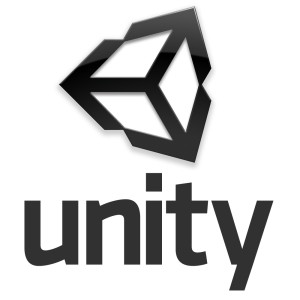Patchivic coding have some concepts that we stick to it while preparing, coding and even testing any App. Any new App should be “useful” to the user, in terms of time saving, effort saving or introducing something new to the user. One of our milestones is to use a Great Icons. Using Great Icons make the App friendly and user attractive, this is facilitating the purpose of the App.
Coming to the next milestone, the App should be easy to use, saving more time within the App. We call this “In-App Time Consumption”. This term should be tested very well during the testing procedure. In some cases, Apps are rejected to launch after coding and during the testing time. This is because the user is the most important than coding or any other glow Patchivic can gain from a non-useful App.
Some In-App success keys comes to our minds in every App. Real-time is one of them, since the App will be providing informations to users, these informations whatever it’s type should be accurate. And one perspective of accuracy, is to be real-time for dynamic informations. User friendly comes next with “Easy to Use” concept, that will save user time to get the required data / information without spending too much time in the App searching for it. Great Icons is another concept we follow by creating a high quality icons to be used in our Apps. This is facilitating our marketing and acting as self-promoting feature within the App, resulting to our loved concept of “Word of Mouth” marketing technique.
Perspective
- App Purpose
- Clean Code
- Easy to Use
- Great Icons

Drawing always comes first when thinking about a new App. We draw what we would like to see when we install a new App from App Store or Google Play, putting the user first in all aspects.

Mohamed ElBasyouni is the main developer for Patchivic Mobile Apps and Mobile Games.
WordPress uses a number of different programming languages. If one language has to be singled out as the “main” one it would be PHP. PHP is a server side language, which powers about 82 percent of the web. WordPress also uses HTML, CSS and Javascript. HTML is used to give your website structure and is employed by all websites. CSS helps style your HTML structure. CSS makes your background white, your text dark-grey and positions the sidebar on the right. Javascript adds advanced features like sliders and other interactive features.
Finally, WordPress also uses MySQL, which is responsible for querying the database. MySQL is used to retrieve the last 10 posts, or all posts in a particular category from the database. So the bad news is that this is a considerable body of knowledge. The good news is that you don’t need to know everything to get started; in fact, you can get by with very little. I myself learned programming through WordPress about three years ago by just copy-pasting examples from the documentation.
WordPress has a web template system using a template processor. Its architecture is a front controller, routing all requests for non-static URIs to a single PHP file which parses the URI and identifies the target page. This allows support for more human-readable permalinks. Once downloaded, WordPress installation files have a size of about 20 MB. As of February 2017, WordPress is used by 58.7% of all the websites whose content management system we know. This is 27.5% of the top 10 million websites.
b2/cafelog, more commonly known as b2 or cafelog, was the precursor to WordPress. b2/cafelog was estimated to have been installed on approximately 2,000 blogs as of May 2003. It was written in PHP for use with MySQL by Michel Valdrighi, who is now a contributing developer to WordPress. Although WordPress is the official successor, another project, b2evolution, is also in active development. WordPress first appeared in 2003 as a joint effort between Matt Mullenweg and Mike Little to create a fork of b2. Christine Selleck Tremoulet, a friend of Mullenweg, suggested the name WordPress.
In 2004 the licensing terms for the competing Movable Type package were changed by Six Apart, resulting in many of its most influential users migrating to WordPress. By October 2009 the Open Source CMS MarketShare Report concluded that WordPress enjoyed the greatest brand strength of any open-source content management system. As of January 2015, more than 23.3% of the top 10 million websites now use WordPress. Main releases of WordPress are codenamed after well-known jazz musicians, starting after version 1.0.
In January 2017, security auditors at Securi identified a vulnerability in the WordPress REST API that would allow any unauthenticated user to modify any post or page within a site running WordPress 4.7 or greater. The auditors quietly notified WordPress developers, and within six days WordPress released a high priority patch to version 4.7.2 which addressed the problem. WordPress’ minimum PHP version requirement is PHP 5.2, which was released on January 6, 2006, 11 years ago, and which has been unsupported by the PHP Group and not received any security patches since January 6, 2011, 6 years ago.
I love the power of the engine. The simplicity of use just complements it. The engine is extremely powerful and can perform any tasks you need it too, the software keeps improving at an exponential rate.

nity is marketed to be an all purpose engine, and as a result supports both 2D and 3D graphics, drag and drop functionality and scripting through its 3 custom languages. The engine targets the following APIs: Direct3D and Vulkan on Windows and Xbox 360; OpenGL on Mac, Linux, and Windows; OpenGL ES on Android and iOS; and proprietary APIs on video game consoles. Within 2D games, Unity allows importation of sprites and an advanced 2D world renderer. For 3D games, Unity allows specification of texture compression and resolution settings for each platform that the game engine supports, and provides support for bump mapping, reflection mapping, parallax mapping, screen space ambient occlusion (SSAO), dynamic shadows using shadow maps, render-to-texture and full-screen post-processing effects. Unity also offers services to developers, these are: Unity Ads, Unity Analytics, Unity Certification, Unity Cloud Build, Unity Everyplay, Unity IAP, Unity Multiplayer, Unity Performance Reporting and Unity Collaborate which is in beta.
Unity is notable for its ability to target games to multiple platforms. Currently supported platforms are Android, Android TV, Facebook Gameroom, Fire OS, Gear VR, Google Cardboard, Google Daydream, HTC Vive, iOS, Linux, macOS, Microsoft Hololens, Nintendo 3DS line, Nintendo Switch, Oculus Rift, PlayStation 4, PlayStation Vita, PlayStation VR, Samsung Smart TV, Tizen, tvOS, Wii, Wii U, Windows, Windows Phone, Windows Store, WebGL, Xbox 360, and Xbox One.






















